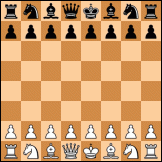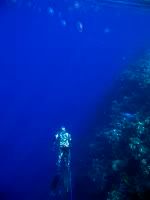Thank you very much for these games and also thanks for the Screenlap link!IWB wrote:Somehow the game was finished automaticaly but I think it doesn't matter:
[Event "105m+15s, unrated"]
[Site "Engine Room"]
[Date "2012.12.05"]
[Round "?"]
[White "Felix 2, Houdini 3 Pro x64"]
[Black "TryMe, Rybka Cluster 64 Cor"]
[Result "1-0"]
[PlyCount "135"]
[EventDate "2012.12.05"]
[TimeControl "6300+15"]
1. e4 c5 2. Nf3 Nc6 3. d4 cxd4 {0.11/21 97} 4. Nxd4 {0.23/28 182} e5 {0.17/22
198} 5. Nb5 {0.23/29 0} d6 {0.22/23 277} 6. N1c3 {0.28/30 0} Nf6 {0.22/23 332
(a6)} 7. Bg5 {0.32/29 134} a6 {0.26/21 0} 8. Na3 {0.45/30 478 (Lxf6)} Be6 {0.
27/22 305 (Le7)} 9. Nc4 {0.51/30 359 (Lxf6)} Rc8 {0.22/22 252} 10. Bxf6 {0.49/
30 0} Qxf6 {0.21/24 134} 11. Nb6 {0.49/31 0} Rb8 {0.23/24 85} 12. Ncd5 {0.48/
31 46 (Lc4)} Qg6 {0.21/24 267 (Dd8)} 13. Qd3 {0.70/28 153 (f3)} Be7 {0.08/22
117} 14. Nc7+ {0.70/29 15 (g3)} Kd8 {0.41/21 258 (Kf8)} 15. Ncd5 {0.72/28 147}
f5 {0.53/20 0} 16. Qc3 {0.70/25 286 (0-0-0)} fxe4 {0.84/21 428} 17. O-O-O {1.
01/27 0} Bxd5 {0.89/20 187 (Ke8)} 18. Nxd5 {0.91/26 53} Rc8 {0.84/19 67} 19.
Kb1 {0.94/28 269} Rf8 {1.03/20 0} 20. Qb3 {0.94/28 115} b5 {1.02/22 32} 21. Qa3
{0.90/28 209} Qg4 {1.00/22 0} 22. f3 {0.84/28 161} exf3 {0.99/22 0} 23. Nxe7 {
0.85/27 0} Kxe7 {1.00/22 84} 24. Qxd6+ {0.93/28 29} Kf7 {1.01/23 0} 25. gxf3 {
0.93/27 0} Qf5 {1.13/23 177} 26. Qd5+ {1.46/25 80 (Ld3)} Kf6 {0.80/22 138 (Ke8)
} 27. Bd3 {1.74/27 98} Qe6 {0.89/24 0} 28. Qe4 {1.90/27 119} g6 {1.22/21 0} 29.
h4 {2.09/27 391} Rcd8 {1.47/21 0} 30. a3 {1.84/28 118} Rd7 {1.35/21 14 (Td4)}
31. h5 {1.80/28 194} g5 {1.60/24 0} 32. h6 {1.86/25 340} Nd4 {1.96/22 99 (Tg8)}
33. Rhg1 {2.23/27 474 (Lf1)} Rfd8 {1.55/22 397} 34. Qe3 {2.35/30 0} Rg8 {1.51/
22 17} 35. Rde1 {2.30/28 66} Qd5 {1.63/22 46} 36. Rg4 {2.47/27 29} Qc5 {2.01/
22 206 (Dd6)} 37. Rg2 {2.43/26 59 (Teg1)} Qd5 {2.01/21 61} 38. Qg1 {2.43/24 0
(Le4)} Qf7 {1.60/21 241 (Dd6)} 39. Qf2 {2.51/25 59 (Dh2)} Rd5 {2.02/22 353
(Dd5)} 40. c3 {2.46/25 98 (Le4)} Ne6 {1.92/23 329} 41. Bc2 {2.53/28 0} Nf4 {2.
05/22 129} 42. Rg3 {2.60/26 21 (Db6+)} Rd7 {1.47/22 101 (Tgd8)} 43. Qe3 {2.69/
26 86} Qd5 {1.58/22 65} 44. Ka1 {2.71/26 7} Re8 {1.72/20 55 (Tc8)} 45. Rg4 {2.
28/25 68 (Dg1)} Ne6 {2.26/21 335 (Dc4)} 46. Bb1 {3.39/26 55 (Kb1)} Rc7 {2.62/
20 252 (Ted8)} 47. Ba2 {4.79/23 55} Qc5 {3.24/19 0} 48. Qe4 {5.39/26 60} Qd6 {
3.52/19 0} 49. Rg2 {5.63/27 95 (Teg1)} b4 {4.35/20 254} 50. axb4 {5.73/27 0}
Nf4 {4.46/19 22} 51. Bb1 {5.96/26 0} Qd7 {4.54/20 71} 52. Rd2 {6.34/27 0} Qa4+
{4.56/20 6} 53. Ba2 {6.68/26 27} Qc6 {4.68/20 0} 54. Qc2 {6.67/25 12} Rd7 {5.
48/21 273} 55. Rxd7 {6.96/28 43} Qxd7 {5.35/20 0} 56. Rd1 {6.42/27 29} Qc7 {5.
96/21 189} 57. Bb1 {6.47/26 0 (Da4)} e4 {5.05/21 5} 58. Qa4 {6.47/22 14} Qb8 {
4.84/19 62 (Te6)} 59. Qd7 {8.83/24 18 (Lxe4)} Re7 {5.50/15 4} 60. Rd6+ {9.26/
23 1} Ne6 {5.60/16 1} 61. Qc6 {9.53/22 1} Qb5 {6.37/15 3} 62. Qxe4 {9.52/22 0}
Qe5 {6.43/15 2} 63. Qd3 {10.06/21 0} Ra7 {8.08/19 33 (Db5)} 64. Rc6 {11.23/22
4 (Txa6)} a5 {5.79/16 5 (Tb7)} 65. b5 {11.86/22 5 (Dd8+)} Re7 {9.54/16 19 (Tb7)
} 66. b6 {19.45/22 32} a4 {14.16/19 98 (g4)} 67. Qd8 {25.90/24 29} Kf7 {27.50/
19 59} 68. Qc8 {29.93/24 0 TryMe,Rybka Cluster 64 Cor gibt auf (Lag: Av=0.42s,
max=1.2s)} 1-0
Bye
Ingo
I copied by hand the reached depths by each engine, so I can be wrong. This is the way I recorded them:
Code: Select all
(3rd move of Rybka) (4th move of Houdini)
(4th move of Rybka) (5th move of Houdini)
[...]
(67th move of Rybka) (68th move of Houdini)Code: Select all
21 28
22 29
23 30
23 29
21 30
22 30
22 30
24 31
24 31
24 28
22 29
21 28
20 25
21 27
20 26
19 28
20 28
22 28
22 28
22 27
22 28
23 27
23 25
22 27
24 27
21 27
21 28
21 28
24 25
22 27
22 30
22 28
22 27
22 26
21 24
21 25
22 25
23 28
22 26
22 26
22 26
20 25
21 26
20 23
19 26
19 27
20 27
19 26
20 27
20 26
20 25
21 28
20 27
21 26
21 22
19 24
15 23
16 22
15 22
15 21
19 22
16 22
16 22
19 24
19 24Then I copied an own Fortran 95 code for calculating means and sample standard deviations and I did some changes. Here are the results I obtained:
Code: Select all
Number of moves without opening book by each engine: 65.
µ: average depth; s: sample standard deviation of depths.
µ_Rybka ~ 20.7538; s_Rybka ~ 2.1797
µ_Houdini ~ 26.4154; s_Houdini ~ 2.4102
µ_Houdini - µ_Rybka ~ 5.6615
sqrt[(s_Rybka)² + (s_Houdini)²] ~ 3.2496
k = (µ_Houdini - µ_Rybka)/sqrt[(s_Rybka)² + (s_Houdini)²] ~ 1.7422
(Roundings up to 0.0001).
Finished. Approximated elapsed time: 3042 µs.I hope that this info will be useful in some comparisons.
Regards from Spain.
Ajedrecista.

